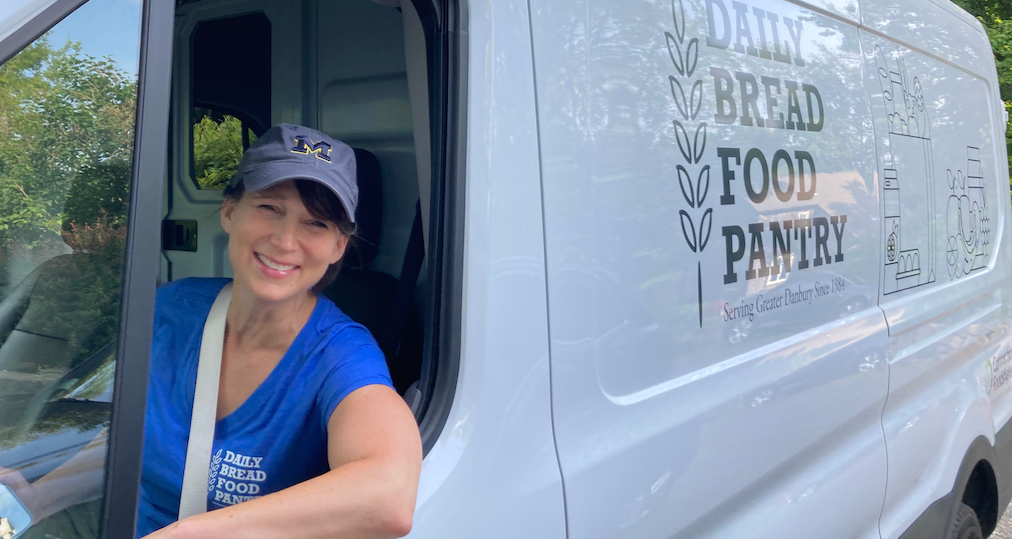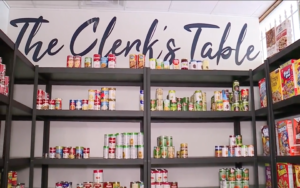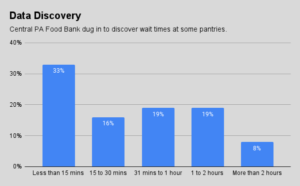Like many food pantries, Daily Bread Food Pantry in Danbury, Conn. was recently given the opportunity to apply for a grant to increase its ability to distribute food.
With Connecticut Foodshare making sizable grants available, Peter Kent, Executive Director of Daily Bread, figured that plenty of pantries across the state would be applying for funding to acquire vehicles and/or cold storage – two of the most obvious ways to expand capacity. So he sought a way for his application to stand out.
“I really sold them on giving us a grant specifically because we would be buying an electric van,” Kent said.
His strategy worked, and now Kent and members of his volunteer team are tooling around town in a driver-assisted, pantry-branded electric vehicle. The van is a perfect fit for the mostly short drives the pantry requires. An added benefit is its role as a “halo asset” by serving as a conversation-starter with potential donors.
Purchasing an electric vehicle turned out to be only slightly more expensive than a standard one. Kent ended up paying $55,000 for a new van with a full suite of bells and whistles, including a 3-D camera and collision detection, to increase the comfort level for volunteer drivers. “I was surprised by how little the differential actually was,” he said.
On the plus side, Kent expects maintenance costs will be lower. In most parts of the country, the cost of charging the vehicle should be about half the equivalent amount of gas, he estimates. In Connecticut, however, where the rates are higher, the cost to power up is about two-thirds the amount of gas needed. “The running costs will be a lot lower if you don’t live in Connecticut,” he noted.
Daily Bread uses the van mostly to drive three to five miles at a time to pick up food, sometimes frozen, from local wholesalers. Initially, Kent thought about purchasing a refrigerated van, but realized that the mostly short trips would not impact food temperatures too much. All in all, the electric vehicle is “much more user-friendly than the average U-Haul truck that we would rent, which is typically not in great shape to begin with and doesn’t have all of these driver assistance features either,” Kent said.
One potential downside is the still nascent infrastructure of charging stations, especially for non-Tesla vehicles. On the rare occasion when Daily Bread needs the van for a long round trip, it needs to investigate whether there are charging stations along the way (though that should change next year as more Tesla Supercharger stations begin to open up to vehicles from other carmakers). “I knew that we could get the use out of it just by having it complete the very local trips,” he said.
Kent considered installing a charger at the pantry, but ultimately ended up putting one at his own home, where he charges the vehicle about twice a week. “It becomes like your phone. You just go home and plug this thing in.”
An unexpected benefit of the electric van has been its ability to engage people who are not primarily interested in hunger relief, but may be engaged in environmental issues or electric cars. “It’s very useful simply as a transportation device, but it’s also a marketing tool,” Kent said. “It gives us an entree to speak about the things we’re more interested in.” – Chris Costanzo
PHOTO, TOP: Daily Bread Past President Debbie Landzberg behind the wheel of the electric van.
Like what you’re reading?
Support Food Bank News













